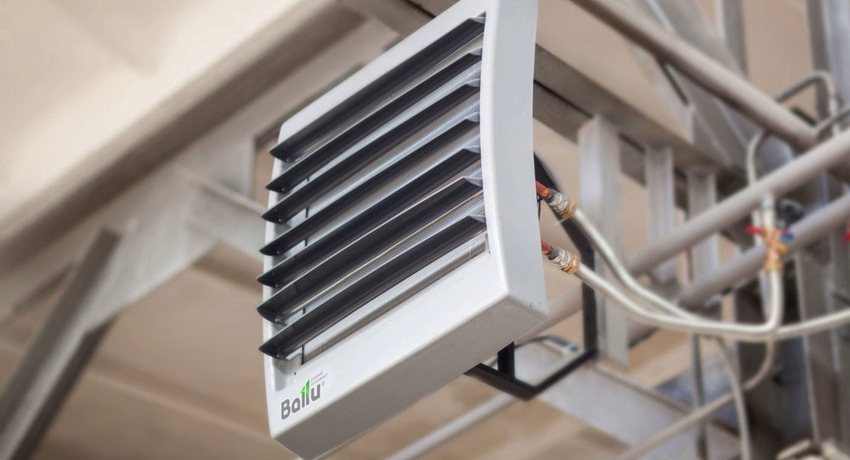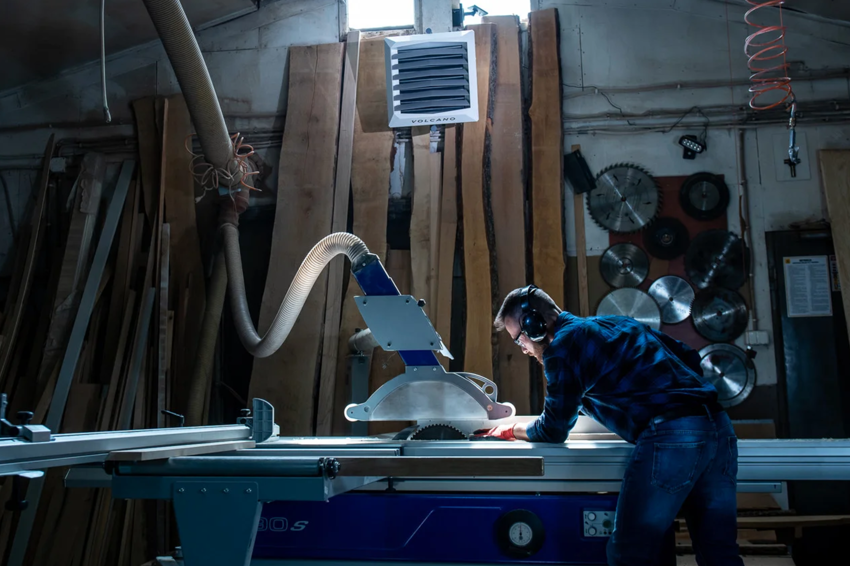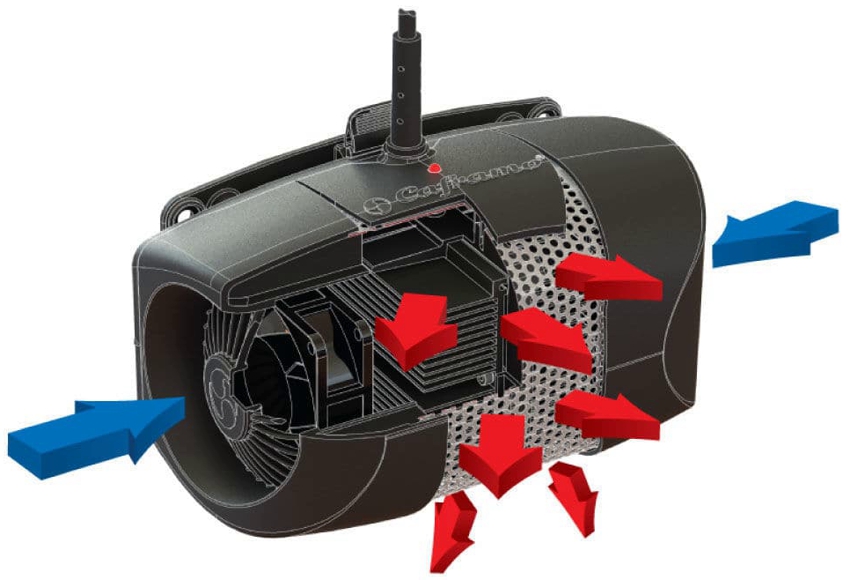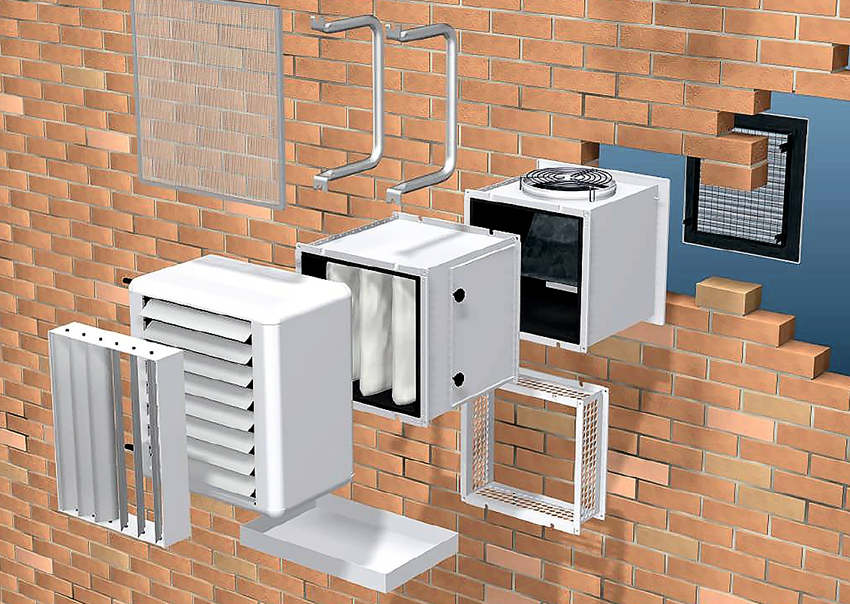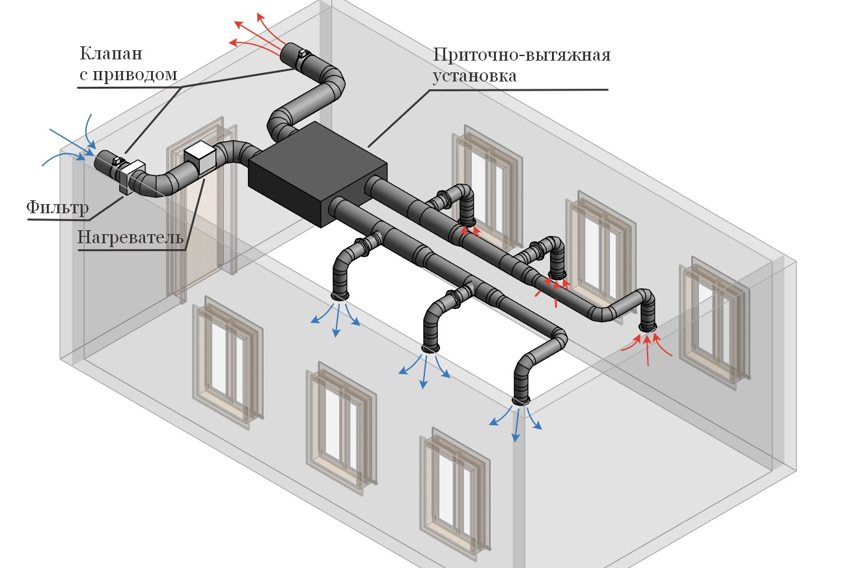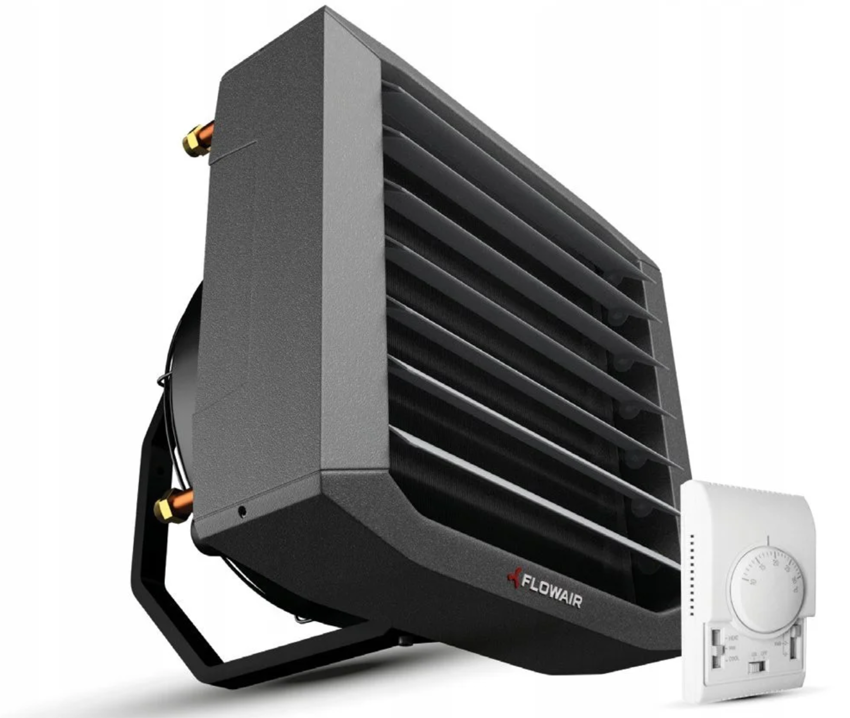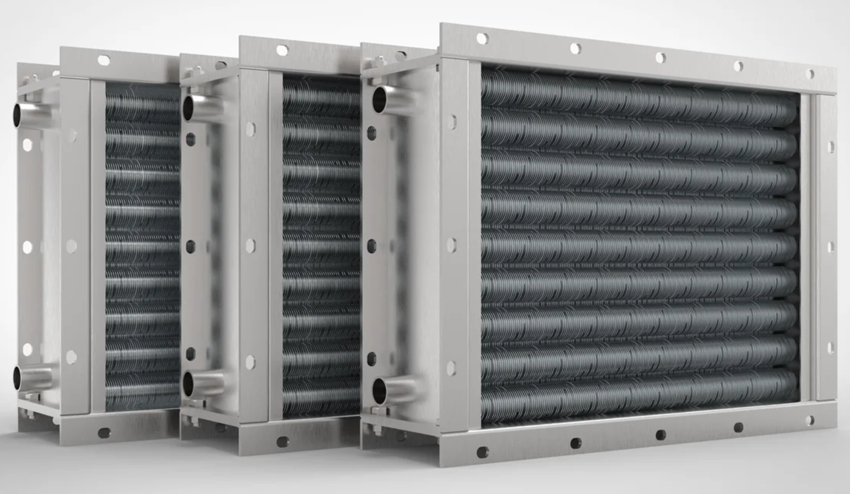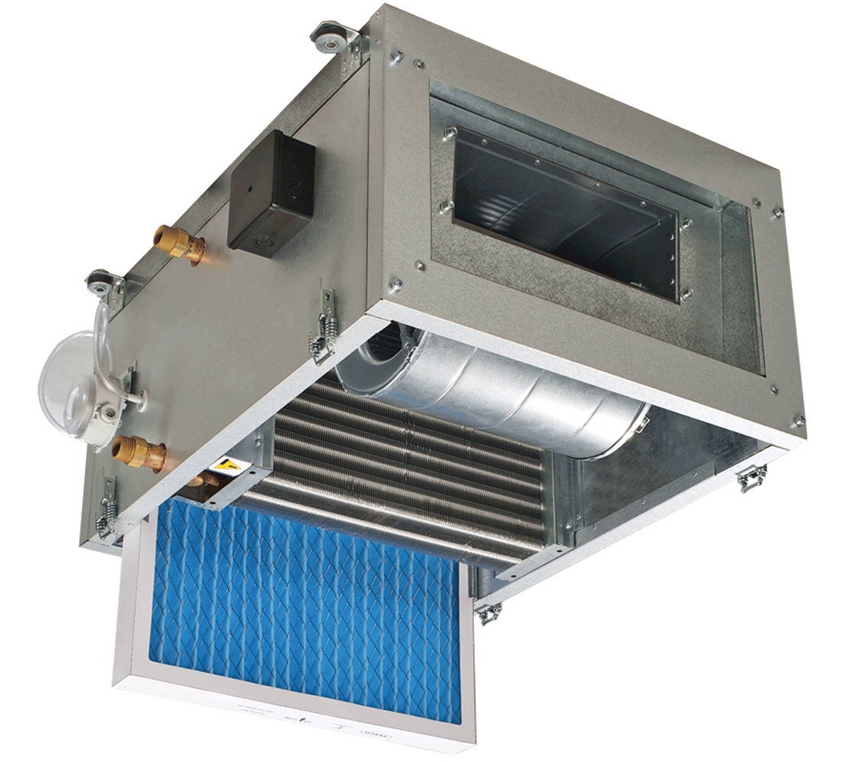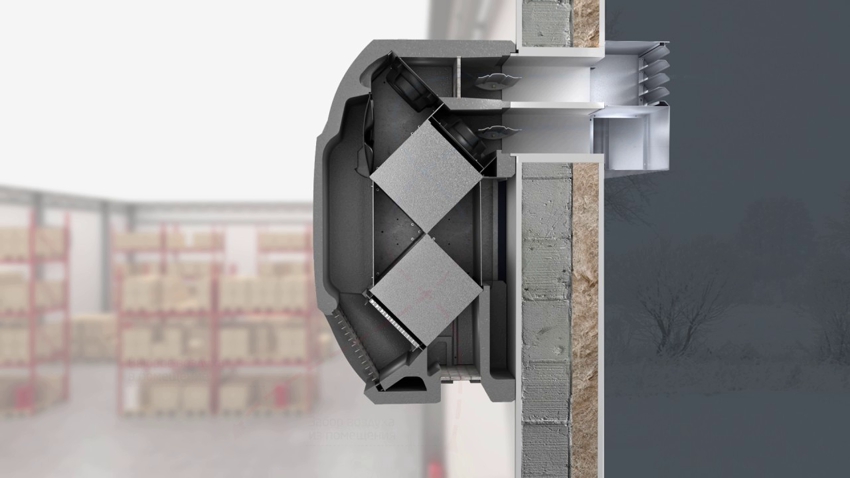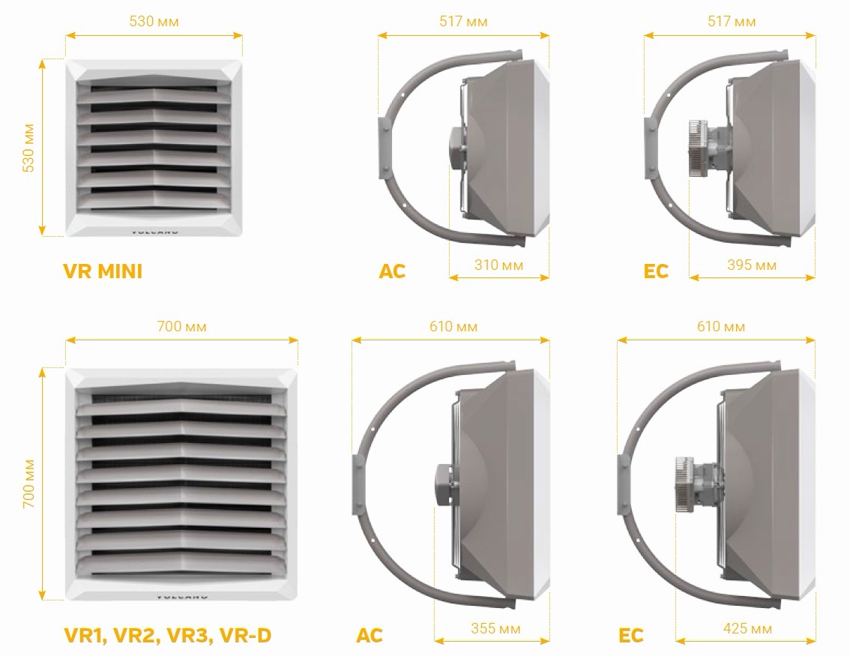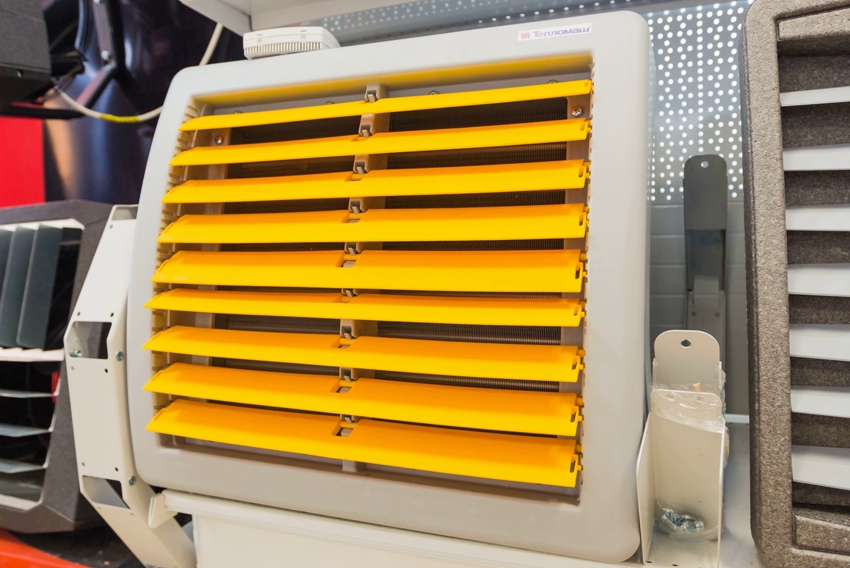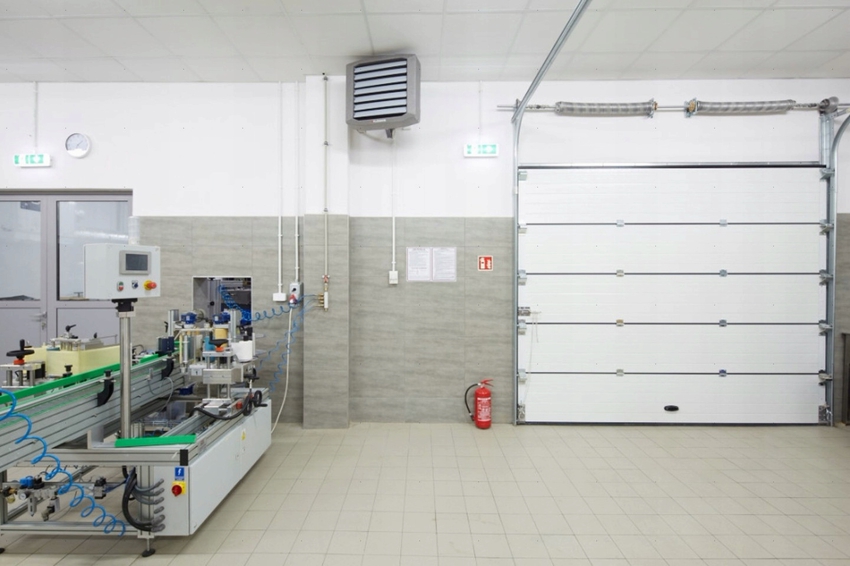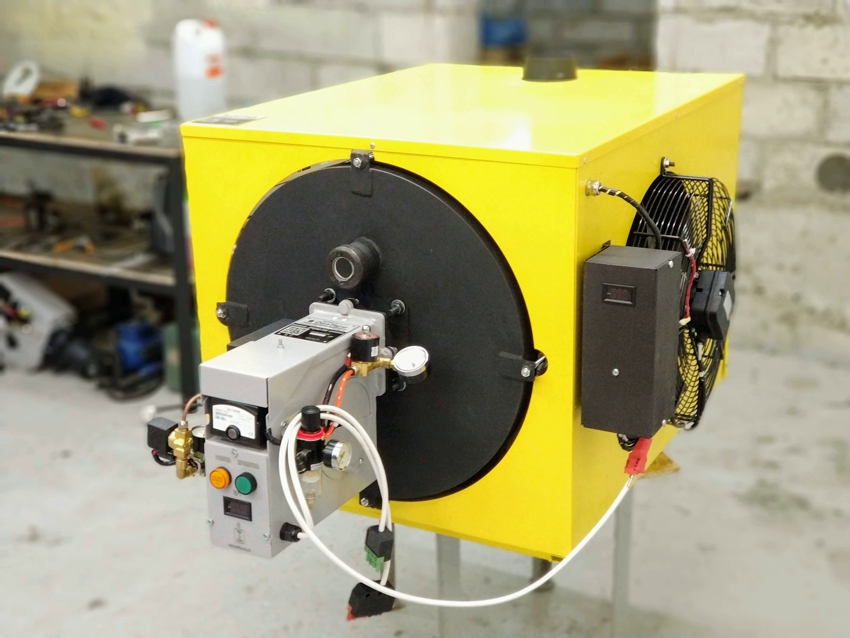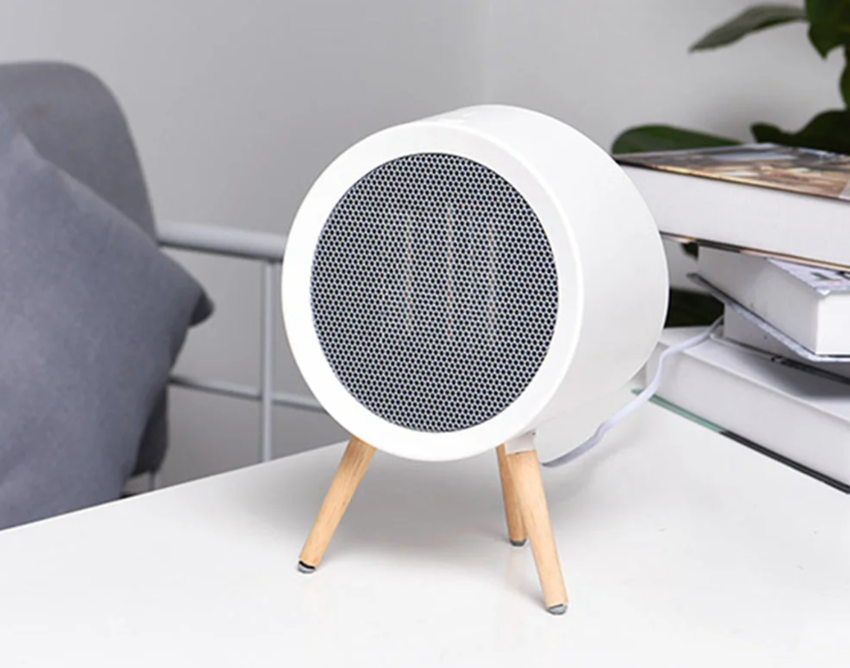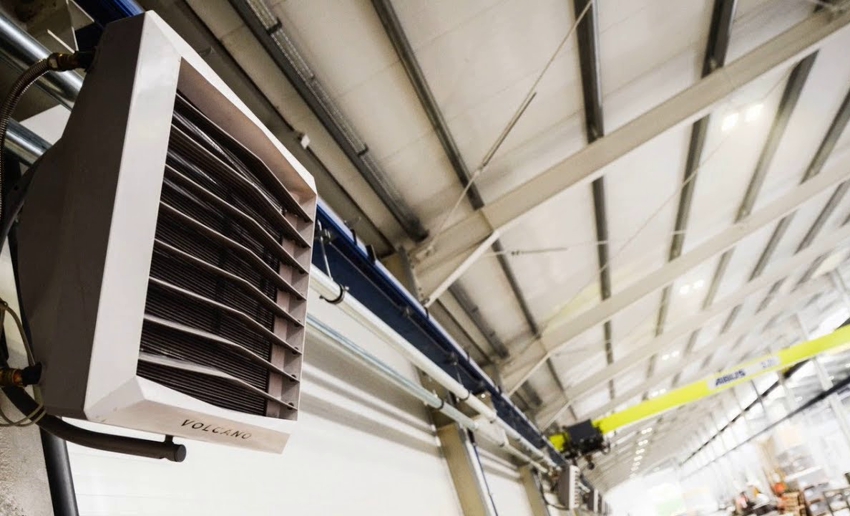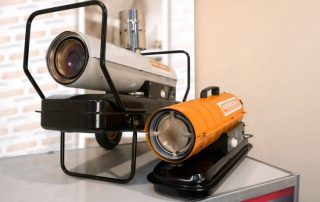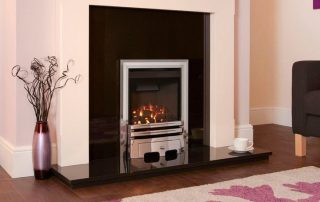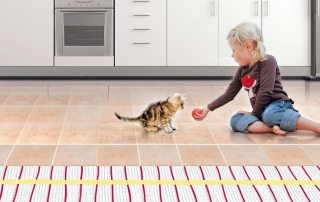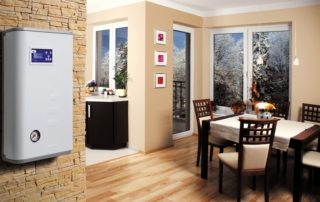Such a concept as an electric heater has several meanings. First of all, it depends on the purpose of the device. It is used for heating air in heating systems, ventilation and air conditioning. In this case, different substances are used as a heating element. About what kind of heaters are, it will be discussed in this article.
Content [Hide]
- 1 Air heater: a device for heating air in different systems
- 2 Water heater: principle of operation and purpose
- 3 Water heaters with fan: characteristics and manufacturers
- 4 Electric heater: features of operation
- 5 Household electric heater: features and types
- 6 Maintenance and repair of the ventilation air heater
Air heater: a device for heating air in different systems
Before proceeding with the choice of a device, it is necessary to understand the very concept of what a heater is, as well as what types are there and what are the typical and functional features of each of them.
Heaters are used to heat air in various systems:
- heating;
- air conditioning;
- ventilation.
Heating in heating equipment is carried out due to the reaction between chemically aggressive substances in the middle. That is why the classification of air heaters is based on the type of heat exchanger. The device can be water, steam, freon and electric. A water heater for heating is used as a heat exchanger with an intermediate heat carrier. The steam heater is used to heat the air in heating systems.
If the air heaters are classified according to their thermal and aerodynamic characteristics, then the types of air heaters are divided into three-row and four-row. According to the number of connecting dimensions, the air heaters of individual models are divided into 7 numbers.
Steel pipes, which have a ribbed surface on the outside, serve as the carrier of the coolant in the middle of the heater. Due to this design, the area increases and, as a result, such a piping of the heater increases the efficiency of heat transfer. In the middle of the ribbed tubes, a heating or cooling element is transported in the form of water, steam or freon.Outside, air currents flow, which are heated or cooled during contact with the pipes.
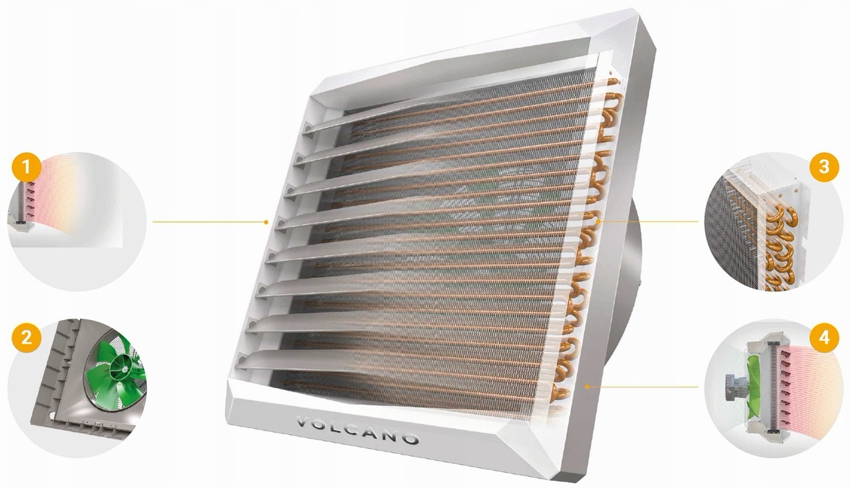
Volcano air heater structure: 1 - movable adjustable blades, 2 - built-in diffuser with a fan, 3 - heating elements, 4 - warm air supply
The general scheme is based on this principle of operation: the coolant has a high heat transfer coefficient when interacting with air flows. The ribs on the device are metal plates that are simply pushed onto tubes or wound like ribbons or wire.
Water heater: principle of operation and purpose
Water heaters are used to heat the air in various rooms where there is no centralized heating. They are also designed for ventilation or air conditioning systems. This type of heaters is a climatic equipment that serves as a heat exchanger filled with an intermediate heat carrier. The coolant in this equipment is heated or hot water.
Important! If the heater is used in climates with an ambient temperature below 0 ° C, the device must be equipped with special frost protection. Otherwise, the frozen water in the pipes can simply rupture them.
The steam heater differs from the water heater in that dry saturated steam serves as a heat carrier in the device. These are more advanced models of heaters, so the price of a heater of this class is an order of magnitude higher.
Water air heater: design and operation features of the device
The water heater has a very high performance level. This is possible due to the wide temperature range, ranging from 70 to 110 ° C. The temperature difference is created by the heater itself. The design of the device is a tubular metal body covered with rib plates.
The most common type of air heater is a water heater with a perpendicular flow. It is used in various ventilation devices. In this case, the water moves opposite to the air flow, in a rectangular direction. As a result, water rises through the channels from bottom to top, air bubbles go up the device, and from there they are removed through special air vents.
In any water heater, a piping unit must be installed, which is a special component of the device responsible for supplying hot water to the heat exchanger.
The design of a water heater includes the following mandatory details:
- pump for circulation of the coolant;
- three-way valve;
- structural fittings;
- Control block;
- knot for strapping that controls the performance of the heater and prevents it from freezing.
Water heater for supply ventilation: principle of operation and scope
An electric air heater for supply ventilation is used for heating or, conversely, for cooling the air that comes from the street. Install such devices in the middle of the ventilation channel. The unit creates a beneficial microclimate, regardless of the season. Duct heaters are used in rooms with different areas. The work of the air heater for supply ventilation will be especially effective in spacious workshops, greenhouses, warehouses, which are equipped with an appropriate ventilation system.
An air handling unit with a water heater is considered the most efficient way of heating or cooling in rooms with a large area. Their operation is most relevant in winter, when the air that enters through the ventilation supply system requires heating.
Useful advice! Duct-type water air heaters should be selected depending on the type of ventilation system. It is determined based on the supply ventilation scheme, which has a square, round or rectangular section.
The units are installed in the middle of the ventilation duct, which has a circular or rectangular cross-section. The air coming from the street is passed through the filtration system and enters the air heater for supply ventilation, where it is heated by heat, which is given off by the water heating system, which flows to the heat exchanger through the air heater duct.
Air handling units with an electric air heater also provide fresh, clean, cool air to the room. At the same time, waste masses come out through the ventilation system. Both in industry and in everyday life, supply installations with an electric heater, operating from the network, are more in demand.
Water heaters with fan: characteristics and manufacturers
A water heater with a fan is one of the most economical and efficient devices for heating air in hangars, warehouses, gyms, trade, exhibition and concert halls, car services, workshops. It is also used to heat greenhouses, farms and other spacious facilities with a large area.
Such units are also available in different designs, depending on the intended location. That is, there can be wall or ceiling heaters that can be easily installed in any room.
The main advantages of water heaters for heating are their energy efficiency and performance, which is manifested in the ability to both increase and cool the temperature in the room. At the same time, fan heaters are generally low-cost, since they consume little electricity and allow you to save on heating.
Both foreign and domestic brands specialize in the production of such heaters, including Teplomash, Greers, Flowair and Volcano. A hot water heater with a fan is an excellent solution in most cases for heating large objects.
KSK heaters are considered popular in the domestic market. Devices of this brand are compact and economical. The units are widely used in industry, as they perfectly cope with the task of quickly heating air in rooms with a large area, while using a minimum of electricity. The devices are also used as a heat exchanger. They are a component in various units, heating, air conditioning and ventilation systems. The heat carrier in the KSK heater is hot water with a temperature index above 190 ° С.
Heating air heaters with a fan: design and operation features
Fan heaters are available in six standard sizes. These are very popular heating products, therefore they have a wide range of models from many manufacturers. There are two-row and three-row models. Heater power from 10 to 60 kW allows you to select equipment for rooms with different areas.
Interesting to know! Modern fan heaters are characterized by a low noise level, which does not exceed 55 dB at a five-meter distance from the unit when operating at full power. At a reduced fan speed, the noise level is reduced by up to 30 dB.
Such heaters are also called fan heaters or duychiks, they are compact and lightweight. They are attached to the ceiling or wall using special brackets.
For the purpose of durability, the casing of the unit is made of polypropylene or galvanized steel, and covered with enamel on top.Polypropylene has a high degree of resistance to mechanical damage and resistance to various gases and vapors. Therefore, the housing can withstand high temperatures and is resistant to corrosion and damage of various nature.
Copper tubes are used for the production of the heat exchanger, and aluminum plates are used for the finning. They are mounted on the back of the device, which greatly simplifies the installation of the device and improves its design.
The device is equipped with a silent axial fan with blades made of special profiles and bearings of the highest class, which do not require lubrication. Such a device provides high performance with low power consumption. In addition, the air flow is adjustable within the operating range. The heating medium is water from the centralized heating system.
The units are manufactured in ceiling and wall versions. Due to the lightness of the mounting console, the unit can be turned 180 degrees during operation.
Electric heater: features of operation
Electric heaters are now successfully used to heat various premises, both residential and economic and industrial. Given that the source of energy is electricity, there are certain safety measures during their operation. First of all, the presence of vapors from explosive objects, as well as conductive dust, should be excluded.
Basically, electric heaters are installed in spacious warehouses, workshops, halls, garages and drying chambers. Their vertical and horizontal installation is provided. An important condition for safe operation is the availability of access to the system reset panel in manual mode. Particularly popular are air heaters, which are successfully used on construction sites.
Electric heaters significantly speed up the drying process of various building materials, in particular plaster and paint. They are often used to form a thermal curtain at gates or door structures.
The wide temperature range of operational capabilities allows it to be used in the temperature range from -30 to 50 ° C. In order to avoid overheating of the unit, care should be taken to ensure sufficient air flow, therefore, a corresponding calculation must first be carried out. The air heater, if used correctly and carefully, can serve for a long time.
Useful advice! When choosing an electric industrial heater, you must be extremely careful and take into account the size of the serviced area. It is also necessary to take into account that wall-mounted units are most often used, therefore, for safety reasons, it is necessary to take care of their reliable fixation using special brackets.
Household electric heater: features and types
There are special autonomous heating electric heaters for the home. Such devices are used mainly as a source of temporary heat during periods when there are interruptions in centralized heating, or in conditions of early or prolonged cold weather. Modern manufacturers offer a wide range of different heaters.
Related article:
Heating manifolds: guarantee of efficient heating system operation
Features of the technological unit. Principle of operation. Varieties of construction. Manufacturing material. Selecting a manifold header. Manufacturers.
To choose the right option, it is necessary to take into account a number of features, in particular, pay attention to the power of the heating element, compared with the area of the heated room. You should pay attention to the functionality of the air heater and how quickly and efficiently it heats up the room. Saving energy is also a very important issue in the process of choosing a heater.
The modern market for heaters offers the following types of electric household air heaters:
- oil radiator;
- electric convector;
- thermal fan;
- infrared heater.
When giving preference to one or another type of air heater for domestic needs, the expected operating conditions should be taken into account. The power of the heating element plays an important role. This concept means the amount of heat energy that is produced over a certain period of time.
For standard apartments, where the ceiling height does not exceed 2.5 m, the heater is selected based on the following conditions: 1 kW of power is required for 10 square meters. If the heater serves as an additional source of heat, then a device with a power of 1-1.5 kW is sufficient for a room of 25 squares. In an unheated room, the device is chosen based on the requirements: 1 kW per 25 square meters.
Oil heater: advantages and functioning features
The safest in the list of electric air heaters for the home is an oil heater. Outwardly, this is a radiator familiar to the eye, but it is made in such a way that it is impossible to get burned when touched. The main difference from other types of heaters lies in the coolant - oil is used as its quality, which expands when heated, filling all the containers. An ordinary heating element serves as an element for heating in such a device.
The positive qualities of this equipment are that one such unit is quite enough to heat one room with an average area. It may be enough even in an unheated room, provided that the outside temperature is not frosty. The installed thermostat on modern air heaters allows you to control the temperature regime of the heater - it is triggered when the desired indicator is reached and, upon its signal, the heater is turned off.
Useful advice! Heating equipment should be purchased in specialized stores that have all the necessary documents and permits for the sale of electrical appliances.
By equipping the device with a timer, it can operate continuously for several days without requiring any special control. This advantage allows the oil heater to be left on for a short time. The only drawback of such equipment is its inertness, since it takes some time for the coolant in the form of oil to heat it up to the desired temperature index.
Oil radiators have their own subspecies:
- electric wall heater;
- floor movable heater;
- oil heater with electronic control;
- radiator with mechanical control.
Waste oil heater and gas heater: garage options
In heating garages, homemade units that run on waste oil are often used. Such a device provides double savings - it serves as a waste oil disposer, and does not require the purchase of expensive heating equipment.
With the help of such a heater, rooms with an area of over 300 cubic meters can be heated, provided that the owner also took care of insulation. If the insulation is weak, then the normal temperature for life can be maintained in a room with a volume of up to 200 cubic meters. The consumption of consumed oil is equal to 300 ml per hour.
The heater can be additionally equipped with automation and special temperature sensors - to determine the presence of a flame and a temperature indicator. It is imperative that the design contains an oil pump, as well as fans for pressurizing and blowing off the heat exchanger. The air heater fans themselves are also equipped with automation.This is a simple thermal relay that is triggered when the device warms up and when it cools down. The oil pump, operating in automatic mode, drops the used oil into the perolysis cup. You can select the desired oil level and rate.
For heating technical premises, gas heaters are also used, belonging to low power heating devices that operate on liquefied gas. The fuel can be propane-butane or pure propane. Such equipment has an advantageous combination of small size and power, so the unit can be easily moved and used in a limited area.
Fan heater: small-sized air heater for home and garden
For premises that are used as temporary housing, for example, for summer cottages, it is best to choose a small and inexpensive heating option, which is a household fan heater. By design, this is an ordinary incandescent spiral made of metal or ceramics, arranged in a plastic case. A fan is installed directly behind the spiral, directing the flow of cold air to the heating element. Thus, the device blows already heated air around the room. This device is a prototype of an industrial fan heater.
Useful advice! In order not to be mistaken in choosing a household air heater, it is enough to look at the device's passport. The document indicates the power of the device in terms of thermal energy performance. Here you should be guided by the standard for calculating the heater: 1 kW per 10 square meters of area.
The fan heater is capable of heating an entire room in a short period of time. Its compactness allows for placement anywhere, directing the warm stream wherever you need it. Such a heater is notable for its affordable price and low energy consumption. Most of the models are equipped with special power regulators that regulate the intensity of the ventilation device.
Modern models are also equipped with a remote control system. In addition, during the summer, the appliance can be used as a regular fan. To do this, simply turn off the heating element. The main disadvantage of such heaters is its short-term operation; moreover, immediately after switching off, the temperature in the room drops sharply.
Maintenance and repair of the ventilation air heater
Like any device, the air heater requires careful attitude and certain care. If you do not follow the operating rules, then cracks may appear on the pipes transporting the coolant, which entails leakage and, as a result, loss of heat. If a low-quality heating medium is used, the heat exchanger tubes may become dirty.
If all working conditions are observed, then unwanted breakdowns can be avoided. Then the main reason for preventive maintenance will be to clean the ventilation system from scale and other deposits. Such manipulations must be performed regularly, since such obstacles reduce the thermal conductivity of the unit, and the costs of its operation, on the contrary, increase. Cleaning consists in a routine flushing using special agents containing reagents that kill bacteria that have settled in the system.
If the heat exchanger was nevertheless damaged, then it is necessary to seek help from specialists who will perform professional equipment repairs. The workers will find the leak, solder the pipes and, if necessary, replace the plates and seals.
It should be noted that untimely cleaning of the ventilation system creates a fire hazard, the cause of which is the accumulation of dust and dirt in the ducts.
Heaters are rightly considered one of the most popular heating equipment devices. When choosing a heater or an air exchanger, a number of parameters should be taken into account, in particular, the type of heat exchanger, the power of the device, pressure, temperature indicators inside the coolant, as well as at the inlet and outlet. The area of the room to be heated should also be taken into account.
